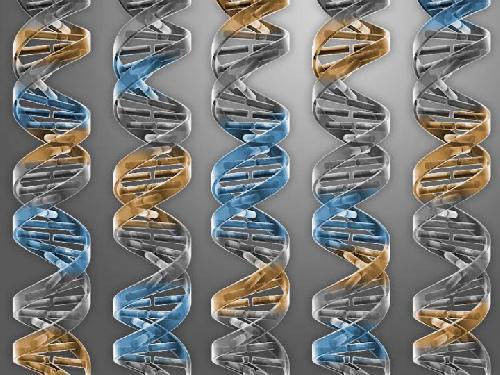Researchers have designed and synthesized a minimal bacterial genome, containing only the genes necessary for life, and consisting of just 473 genes. This advances the team's groundbreaking research published in 2010, in which they built and booted up the first self-replicating, synthetic bacterial cell, providing proof of principle that genomes can be designed in the computer, chemically made in the lab, and transplanted into a recipient cell to produce a new, self-replicating cell controlled only by the synthetic genome. After this the team - led by Craig Venter and Clyde Hutchison - set about their ultimate objective, a goal since 1995, to synthesize a minimal cell containing only the genes necessary to sustain life in its simplest form, an effort that could help scientists understand the function of every essential gene in a cell.
To do this work, Venter, Hutchison and colleagues again turned to Mycoplasma, bacteria possessing the smallest known genomes of any autonomously replicating cells. In 2010, the researchers had synthesized the genome of Mycoplasma mycoides. Here, based on existing literature, the researchers designed hypothetical minimal genomes in eight different segments, each of which could be tested in order to accurately classify constituent genes as essential or not. During this design-build-test process, the researchers also sought to identify quasi-essential genes, those needed for robust growth but not absolutely required for life. In a series of experiments, Venter, Hutchison and colleagues inserted transposons (or foreign genetic sequences) into numerous genes to disrupt their functions and determine which ones were necessary to the overall functioning of the bacteria. They whittled away at the synthetic, reduced genome, repeating experiments until no more genes could be disrupted and the genome was as small as possible. Critically, analysis revealed that some genes initially classified as "non-essential" do in fact perform the same essential function as a second gene; thus, one of the pair of genes needs to be retained in the minimal genome. A final version, dubbed JCVI-syn3.0, comprises 473 genes - a genome smaller than that of any autonomously replicating cell found in nature to date. The researchers' minimal genome lacks all DNA-modifying and restriction genes and most genes encoding lipoproteins. In contrast, almost all genes involved in reading and expressing the genetic information in the genome, as well as in preserving genetic information across generations, are retained. Interestingly, the precise biological functions of roughly 31% of the JCVI-syn3.0 genes remain undiscovered. However, several potential homologs for a number of these genes were found in other organisms, suggesting they encode universal proteins with functions yet to be determined. The JCVI-syn3.0 platform represents a versatile tool for investigating the core functions of life.
 Researchers have designed and synthesized a minimal bacterial genome, containing only the genes necessary for life. This material relates to a paper that appeared in the March 25, 2016, issue of Science, published by AAAS. The paper, by C.A. Hutchison III at J. Craig Venter Institute in La Jolla, Calif., and colleagues was titled, "Design and synthesis of a minimal bacterial genome." Credit: C. Bickel / Science (2016)
Researchers have designed and synthesized a minimal bacterial genome, containing only the genes necessary for life. This material relates to a paper that appeared in the March 25, 2016, issue of Science, published by AAAS. The paper, by C.A. Hutchison III at J. Craig Venter Institute in La Jolla, Calif., and colleagues was titled, "Design and synthesis of a minimal bacterial genome." Credit: C. Bickel / Science (2016)
source: American Association for the Advancement of Science